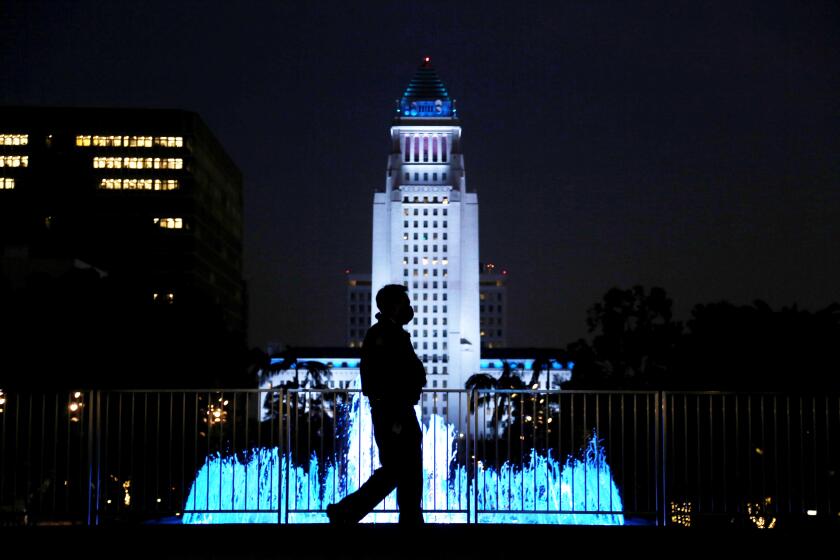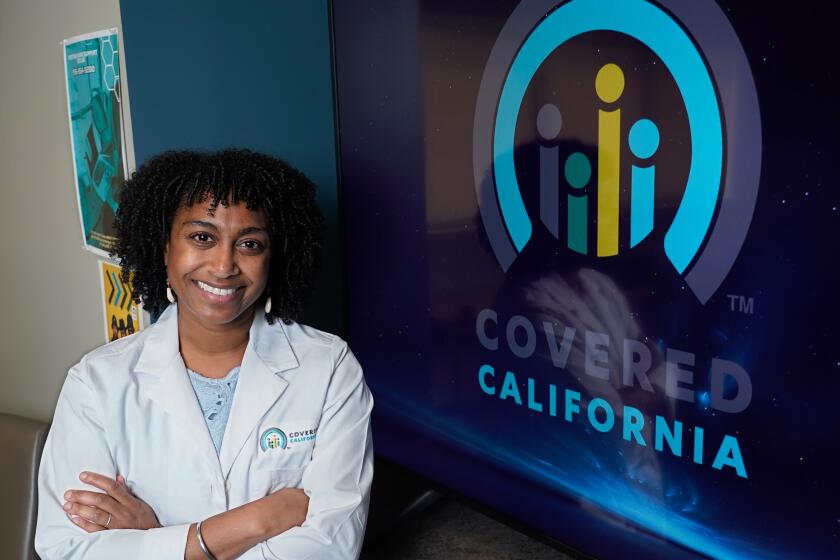With mid-term elections over, state politicians jump to 2016, beyond
- Share via
Now the real fun begins.
For California politicos who spent the last year yawning over a predictable top-of-the-ticket race, what has been shimmering in the distance is suddenly much closer. The next few statewide elections hold the promise of turnover unseen in a generation.
For 22 years, Barbara Boxer and Dianne Feinstein have held the state’s U.S. Senate seats. Both must soon decide whether to seek reelection; for Boxer the announcement will come sooner, as her seat is up in 2016, two years before Feinstein’s.
If Boxer bowed out — and there is no assurance she will — it would usher in swift calculations among a generation of Democrats whose upward mobility has been blocked. That is because in 2018, five of California’s eight statewide offices will be open, including the governorship, along with the possibility of Feinstein’s seat were she to retire.
Presume that Boxer departs. The existential question for would-be candidates: Do I jump at 2016, or take a chance on waiting for 2018? Perhaps more importantly: What will my competitors do?
Sure, it’s all hypothetical. But early jockeying was evident in the just-concluded election.
By the middle of October, according to the last full report available, Lt. Gov. Gavin Newsom had spent more than $544,000 on his campaign and had almost $3 million in the bank. And he was sending out none-too-subtle fundraising appeals with lines such as: “For us, it’s all about the day after Election Day, the day after that, and all the days ahead when we’ll make big decisions about California’s future.” Since the lieutenant governorship is a vast, responsibility-less black hole, those big decisions presumably center on Newsom’s future.
Atty. Gen. Kamala Harris, meanwhile, had spent more than $2.2 million by mid-October, with almost $2.4 million in the bank. And she was blanketing the state with let-me-introduce-myself ads noting that she “aggressively prosecuted predators who victimize the vulnerable … cracked down on sex trafficking of women and children … took on the transnational gangs … prosecuted sexual assaults and enforced laws requiring equal pay for equal work.” No pushover, in other words.
Both Newsom and Harris had negligible opposition on Tuesday. They spent money for two reasons: to guard against an embarrassingly tight race and to define themselves to voters for the future.
Republicans will have their own calculations to make. Theirs are somewhat different; outnumbered among voters and disdained by the independents who could otherwise bolster their standing, the GOP’s best options may be embracing some form of newcomer, like this year’s gubernatorial nominee, Neel Kashkari, or trying to persuade House members to give up advancement in D.C. for an uphill struggle back home. Historically, both have been tough sells.
Democrats enjoy dominance in statewide races, but the combination of ambition and blocked access has enhanced the potential for internal division.
Latinos are one of the party’s bulwarks — almost 3 in 10 Democrats now, according to a pre-election USC Dornsife/Los Angeles Times poll — and would love to see one of their own as senator or governor. Women, the biggest Democratic bloc, drove Boxer’s and Feinstein’s repeated victories — and all other Democratic wins, for that matter — and have been looking for a woman governor since Feinstein ran unsuccessfully in 1990.
Those elements and a more basic one, geography, will come into play. Among the most talked-about potential candidates are Newsom, Harris, former Los Angeles Mayor Antonio Villaraigosa and his successor, Eric Garcetti.
California Democrats most often come with one of two pedigrees: Bay Area or Los Angeles. A ranking Democrat in the Bay Area is known by more than a quarter of the state’s Democrats; a Democrat in the Southern California area commands the attention of upward of 40%. That is a key advantage over politicians from other areas, but the edge vanishes if it’s divided by multiple candidates.
For example, Newsom and Harris. Their profiles in the recent poll were almost identical. Each was at least twice as popular in the Bay Area as in Los Angeles County, though Newsom was more popular up north, on their joint home ground; their standings among Democrats, independents, minority voters, urban residents, men and women, young and old were remarkably similar.
One of them against, say, Villaraigosa, would be a classic North-South clash. But if there were two candidates from the north, the edge could move south.
Then again, campaigns matter. In 1992, the exact scenario — two candidates from the Bay Area, one from the Los Angeles area — greeted Democratic Senate primary voters. Gender trumped geography. The party’s winner was not the candidate from the south — the monied Rep. Mel Levine — but one from the north, a little-known, underfinanced candidate named Barbara Boxer.
“The big question in the minds of every political insider in the state of California,” said Democratic strategist Darry Sragow,”is: What is Barbara Boxer going to do?”
cathleen.decker@latimes.com
Twitter: @cathleendecker
More to Read
Sign up for Essential California
The most important California stories and recommendations in your inbox every morning.
You may occasionally receive promotional content from the Los Angeles Times.











